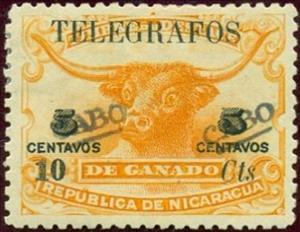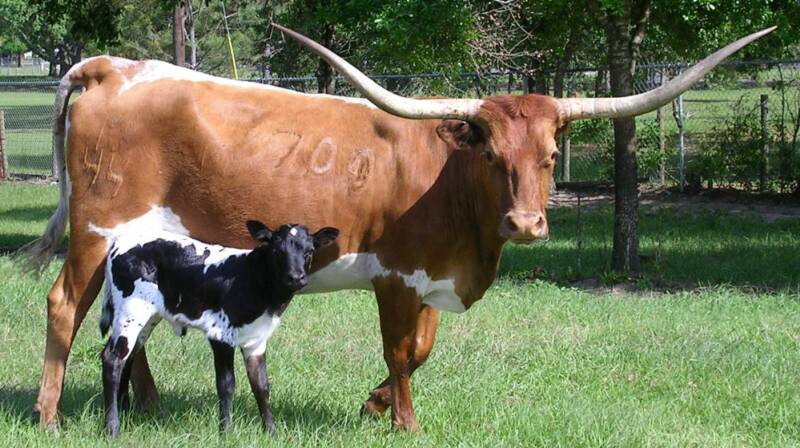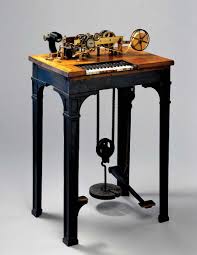Stamp: Bull (Nicaragua, Cabo Gracias a Dios 1911)
Bull (Nicaragua, Cabo Gracias a Dios 1911)
01 January (Nicaragua, Cabo Gracias a Dios ) within release Livestock butchery stamps overprinted goes into circulation Stamp Bull face value 10 Nicaraguan centavo
| Stamp Bull in catalogues | |
|---|---|
| Yvert et Tellier: | Yt: NI-CA TE4 |
Stamp is square format.
5c Nicaragua livestock butchery (Destace de Ganado) revenue stamp surcharged "TELEGRAFOS / 10 Cts" in black, further overprinted "CABO". Hiscocks: 4Also in the issue Livestock butchery stamps overprinted:
- Stamp - Bull face value 10;
- Stamp - Bull face value 10;
- Stamp - Bull face value 10;
- Stamp - Bull face value 10;
- Stamp - Bull face value 10;
- Stamp - Bull face value 10;
- Stamp - Bull face value 20;
- Stamp - Bull face value 1;
|
Data entry completed
50%
|
|
|---|---|
| Stamp Bull in digits | |
| Country: | Nicaragua, Cabo Gracias a Dios |
| Date: | 1911-01-01 |
| Emission: | Telegraph & Telephone |
| Format: | Stamp |
| Face Value: | 10 Nicaraguan centavo |
Stamp Bull it reflects the thematic directions:
Bulls and cows (also known as cows and bulls or pigs and bulls) is a code-breaking mind or paper and pencil game for two or more players. The game is played in turns by two opponents who aim to decipher the other's secret code by trial and error.
Cattle (Bos taurus) are large, domesticated, bovid ungulates widely kept as livestock. They are prominent modern members of the subfamily Bovinae and the most widespread species of the genus Bos. Mature female cattle are called cows and mature male cattle are bulls. Young female cattle are called heifers, young male cattle are oxen or bullocks, and castrated male cattle are known as steers.
Telegraphy is the long-distance transmission of messages where the sender uses symbolic codes, known to the recipient, rather than a physical exchange of an object bearing the message. Thus flag semaphore is a method of telegraphy, whereas pigeon post is not. Ancient signalling systems, although sometimes quite extensive and sophisticated as in China, were generally not capable of transmitting arbitrary text messages. Possible messages were fixed and predetermined, so such systems are thus not true telegraphs.



